Enhance SEO with Knowledge Base
What is Knowledge Base?
Knowledge Base is a special Database System used for systematic management and storage of knowledge. It is not just a simple collection of information, but a carefully organized and structured knowledge resource library. The core purpose of Knowledge Base is to effectively collect, organize, store, and share the knowledge, experience, and professional skills of organizations or individuals, so that these valuable intellectual assets can be more widely utilized. The content of Knowledge Base usually comes from the experiences and lessons of experts or professionals. It contains various knowledge needed to solve specific domain problems, such as facts, rules, best practices, case studies, etc. This knowledge is organized in an easy-to-retrieve and apply way, allowing users to quickly find the information they need.

Knowledge Base plays a crucial role in the enterprise environment. It can help enterprises effectively manage and utilize internal knowledge, accelerate the flow of information and knowledge, and achieve internal knowledge sharing within the organization. This not only improves work efficiency, but also avoids knowledge loss caused by personal flow and other reasons. For example, when an experienced employee leaves, if their knowledge and experience have been recorded in Knowledge Base, they can continue to be used by the enterprise and ensure business continuity. The application scope of Knowledge Base is very extensive. In the field of Client Server, it can be used to store frequently asked questions (FAQs), product descriptions, and troubleshooting guides, helping customer service personnel respond quickly to customer inquiries. In the R & D department, Knowledge Base can be used to record research results, experimental data, and technical documents, promoting knowledge accumulation and innovation. In Human Resource Planning, Knowledge Base can be used for employee training, storing training materials and learning resources.
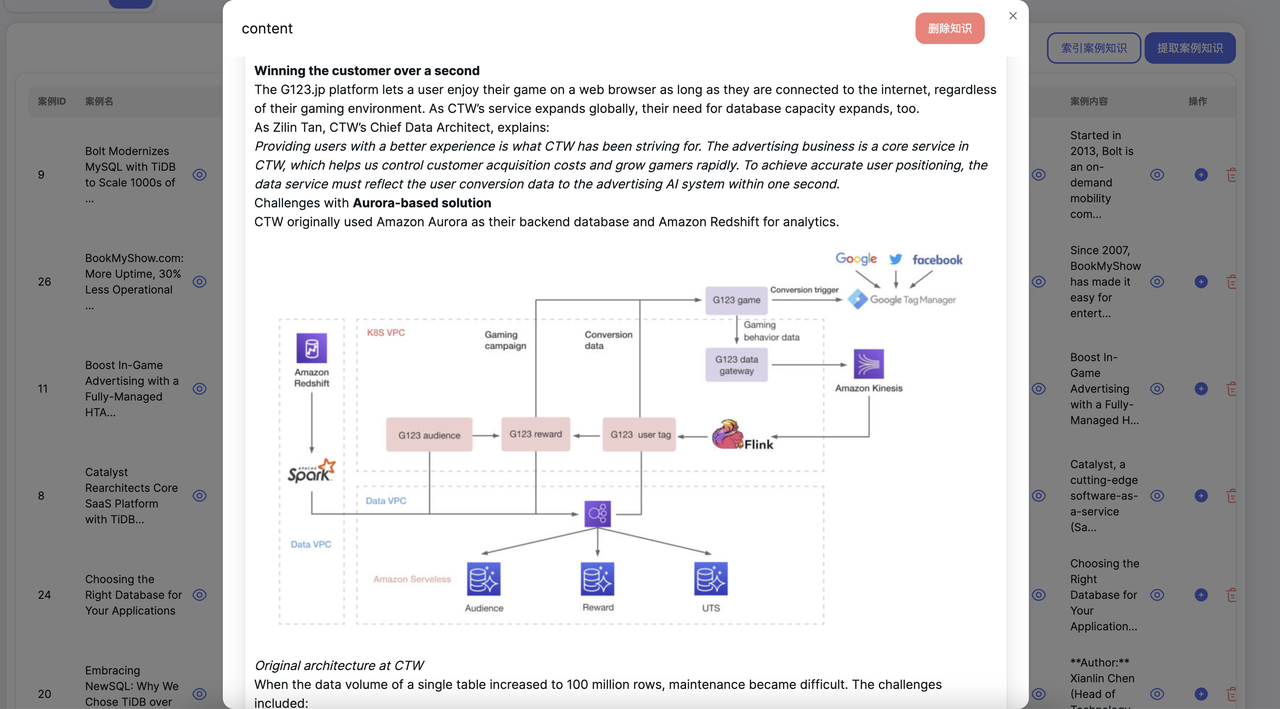
Knowledge Base Case Building an effective Knowledge Base requires certain planning and continuous maintenance. Firstly, it is necessary to determine the target audience and their needs of the Knowledge Base. Then, design the structure and content classification of the Knowledge Base based on these needs. During the content creation phase, it is necessary to ensure the accuracy, relevance, and timeliness of the information. At the same time, an effective update mechanism needs to be established to regularly review and update the content in the Knowledge Base to ensure that it is always up-to-date. The User Interface design of Knowledge Base is also crucial. A good Knowledge Base should have powerful search capabilities, allowing users to quickly find the required information through keywords, tags, or categories. At the same time, it should also support multiple content formats, such as text, images, videos, etc., to meet the display needs of different types of information.
Why Knowledge Base Can Improve SEO Capabilities
Use Knowledge Base to improve content quality and relevance
Knowledge Base, as a centralized system for storing and managing knowledge, contains a large amount of professional information, data, and insights. When writing blog posts, you can dig deep into the resources in Knowledge Base to extract relevant professional knowledge and data support. For example, if you are writing an article about digital marketing trends, you can obtain the latest industry statistical data, expert opinions, and case studies from Knowledge Base. These high-quality information can not only increase the depth and value of the article, but also meet users' search intentions and improve the relevance of the content. Search engines tend to display high-quality and information-rich content, so this approach can significantly improve SEO results.
Optimize the use of keywords
Knowledge Base usually contains a large number of industry terms, professional concepts, and related vocabulary, which are potential long-tail keywords and LSI (Latent Semantic Index) keywords. During the writing process, these keywords can be consciously integrated into the article. For example, using the main keywords in the title, and using relevant long-tail keywords and LSI keywords in the subtitle and body. This approach can not only improve the ranking of the article on specific keywords, but also help search engines better understand the theme and context of the article, thereby displaying your content in more relevant search queries.
Enhance internal links
It also organizes content according to a certain logical structure, which provides a foundation for establishing effective internal links. When writing a new blog post, you can refer to the content structure of Knowledge Base, find other articles or resources related to the current topic, and add internal links in appropriate positions. For example, if you are writing an article about "content marketing strategy", you can link to content related to "social media marketing", "SEO optimization" and other related topics in Knowledge Base. This approach can not only increase user stay time and page views on the website, but also help search engines better understand the content structure and topic relevance of your website, thereby improving overall SEO performance.
Increase the depth and breadth of content
To add to that, it contains a systematic knowledge system, which provides a foundation for creating in-depth content. By taking advantage of this advantage, a series of related long articles can be created around the core theme, forming a thematic cluster. For example, if your Knowledge Base has systematic knowledge about "content marketing", you can create a series of articles to explore different aspects of content marketing in depth, such as "content marketing strategy formulation", "information delivery channel selection", "content effectiveness evaluation", etc. This approach can not only comprehensively cover a certain topic and meet various information needs of users, but also establish your authority in the field, thereby obtaining better rankings in related searches.
Improve the timeliness of the content
Knowledge Base is usually updated regularly, containing the latest industry information and trends. By utilizing this feature, old blog posts can be reviewed and updated regularly to ensure that the content remains up-to-date and relevant. For example, if you have previously written an article about "2023 SEO Trends", you can refer to the latest information in Knowledge Base, update the article content, and change the title to "2024 SEO Trends" when the new year arrives. This approach not only attracts new readers, but also maintains the relevance of the article in search results, which helps maintain and improve search rankings.
How to use Knowledge Base in QuickCreator
Building a Knowledge Base
QuickCreator supports building brand libraries, product libraries, and case libraries. In the future, it will also support FAQs, image libraries, etc. Users can upload doc/pdf/html to build their own Knowledge Base
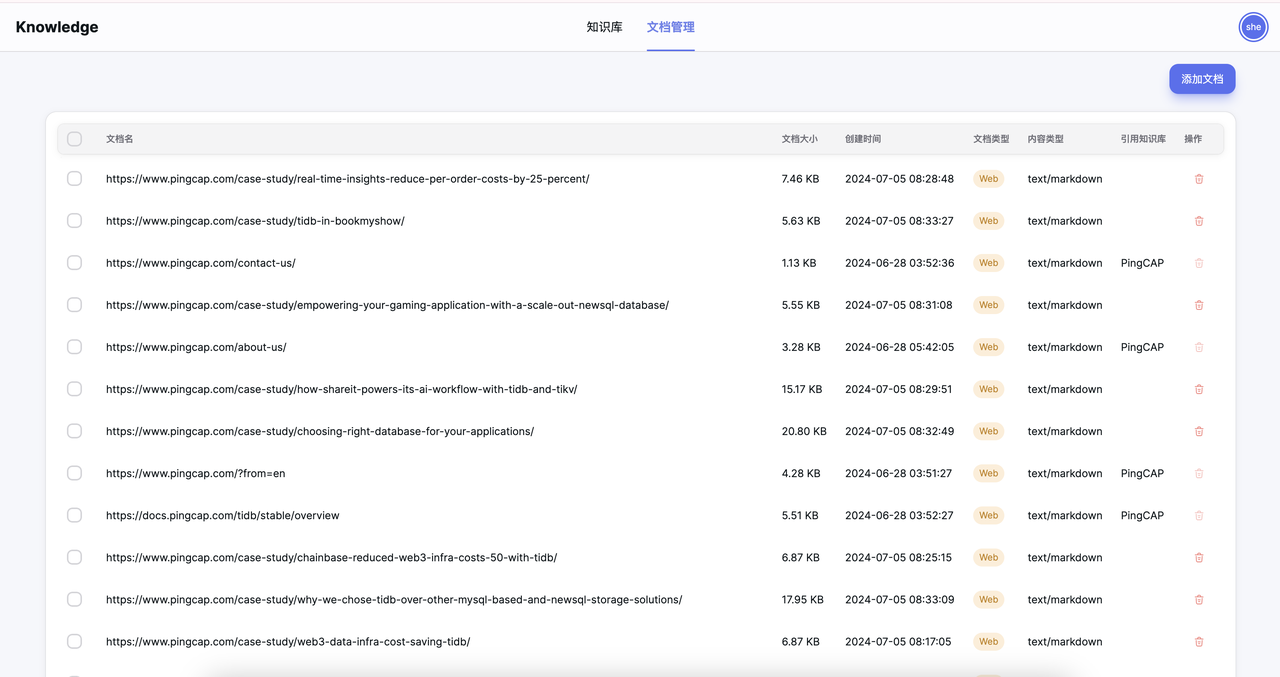
Organize the Knowledge Base
QuickCreator will help users organize and process information from documents, and summarize it into the "brand/product/case" library

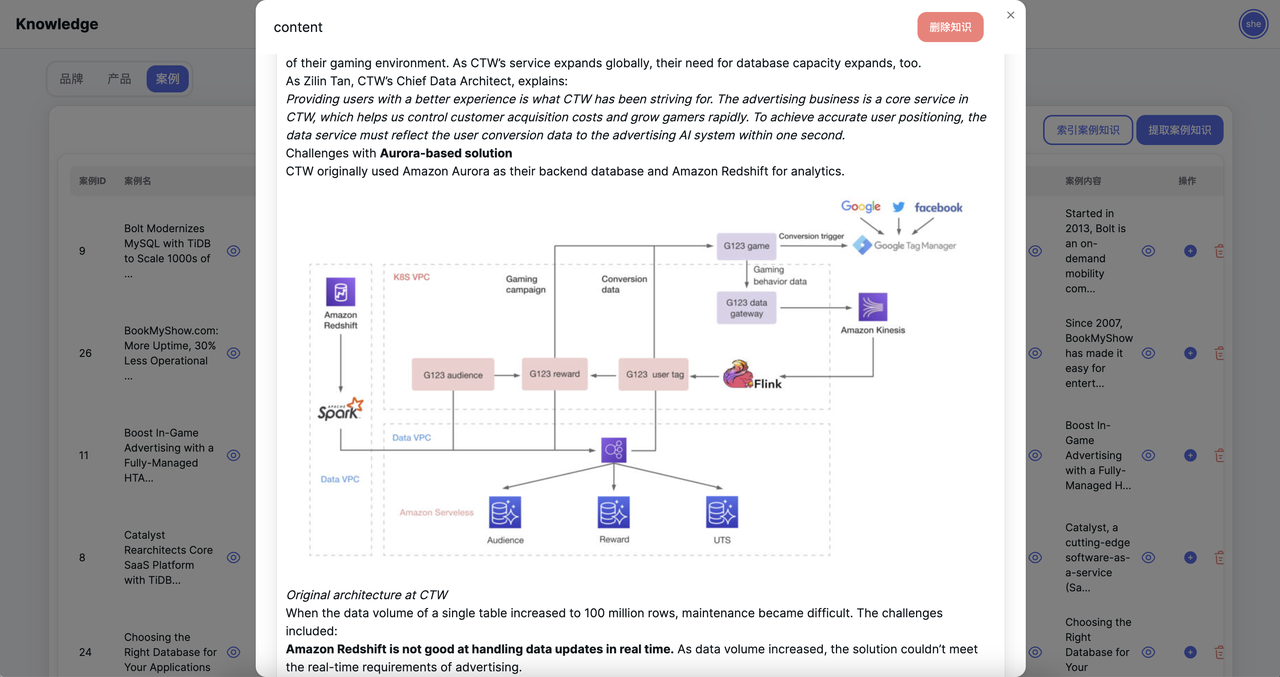
Using Knowledge Base in the Writing Process
During the writing process, you can choose to inject Knowledge Base content. QuickCreator will intelligently and automatically integrate enterprise knowledge into the writing based on contextual information such as title, outline, and reference content.
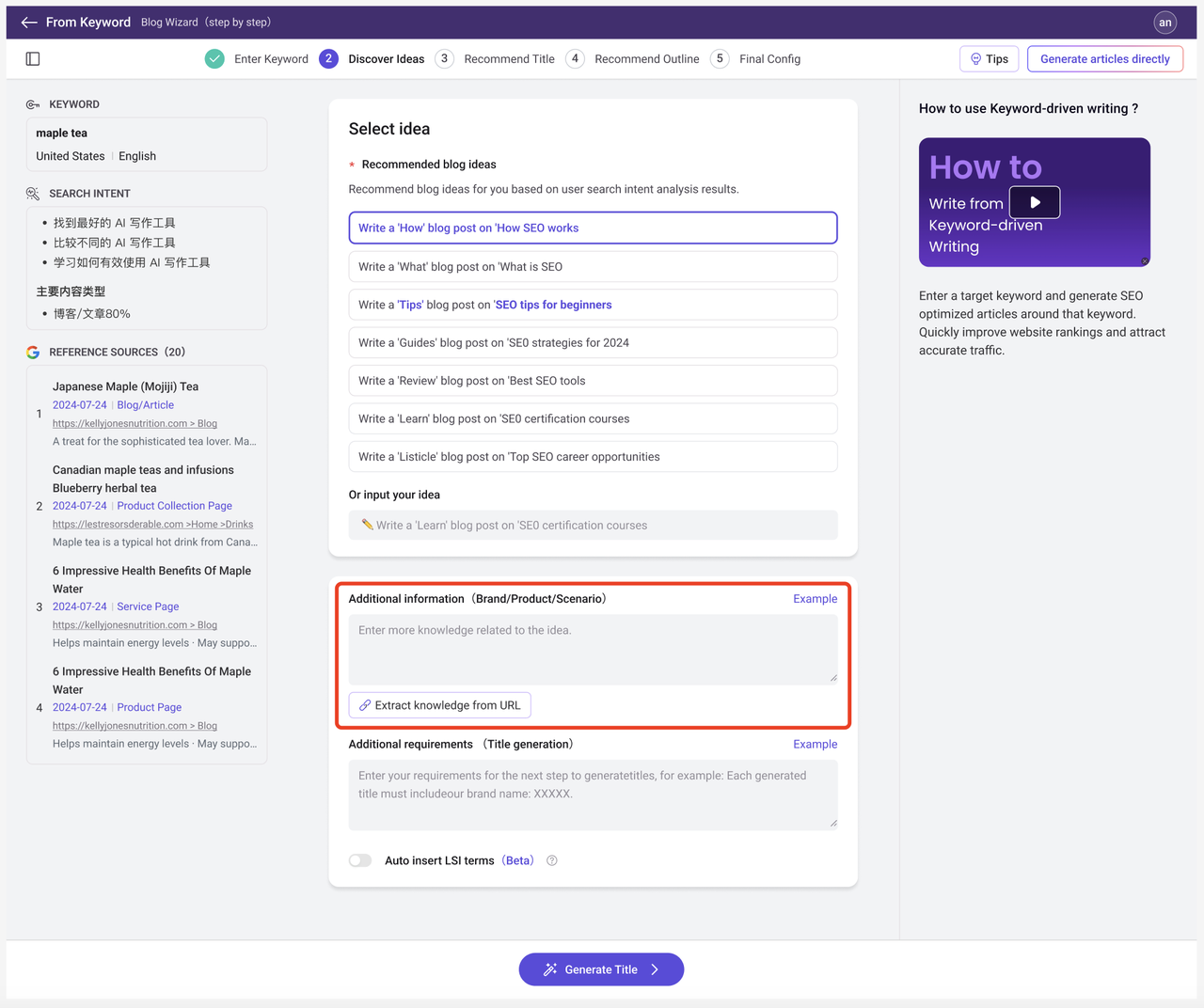
Instance verification after using Knowledge Base
PingCAP is our client. They are a company specializing in database technology, founded in 2015 and headquartered in Beijing, China. The company is known for its open-source distributed database TiDB, which is a database that combines OLTP (Online Transaction Processing) and OLAP (Online Analytical Processing) capabilities, aiming to provide enterprises with high availability and scalability solutions. During their use, they injected a large amount of brand/product/use case content into the Knowledge Base. Therefore, QuickCreator wrote content rich in customer internal knowledge.
| For example, increasing real use cases for customers |
|---|
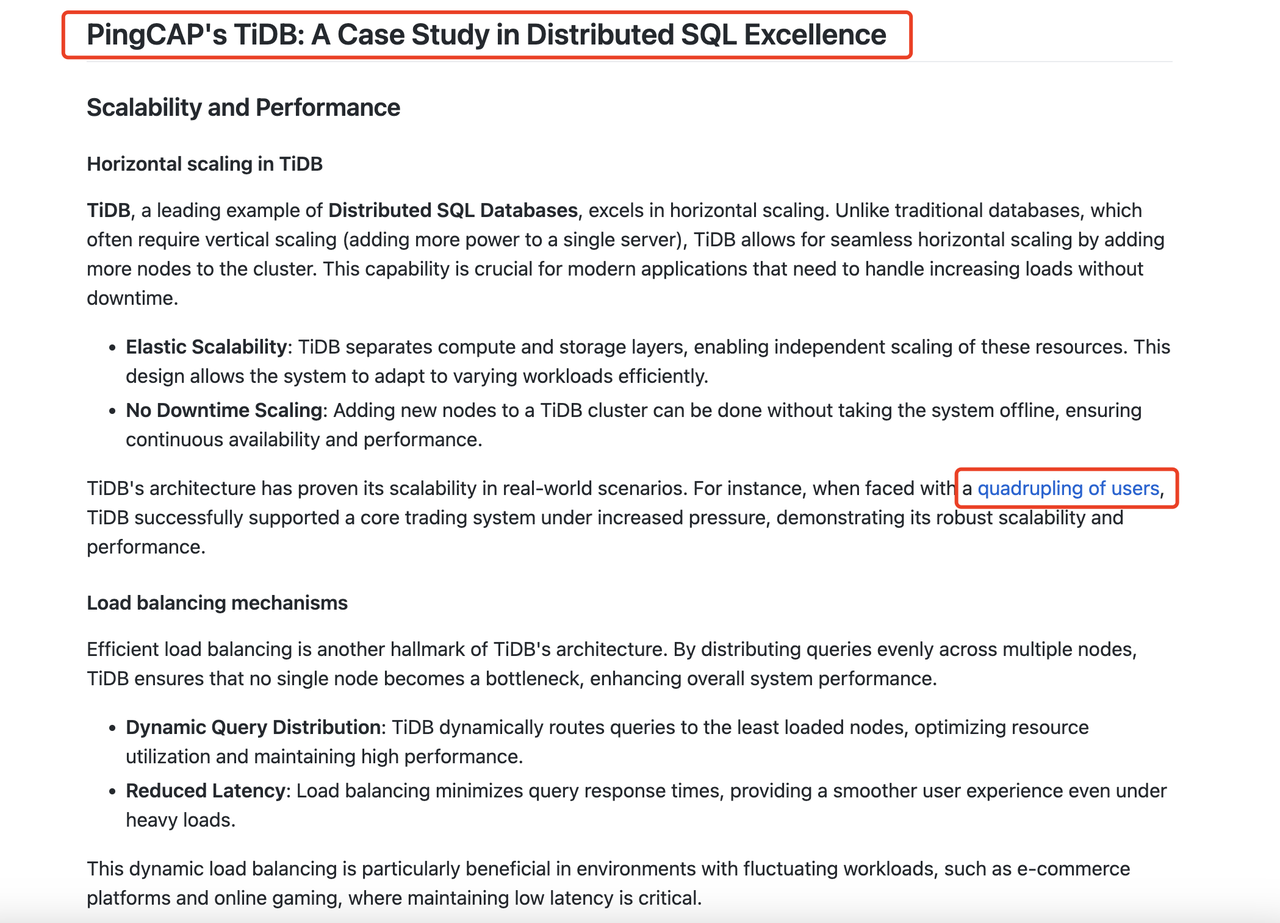
| For example, fill in more brand words in the content |
|---|

Through the above methods, QuickCreator can fully utilize Knowledge Base to improve the quality, relevance, and structure of blog content, thereby optimizing SEO effectiveness, improving search rankings, and organic traffic. This is a continuous process that requires constantly updating Knowledge Base, optimizing content, and adjusting according to SEO effectiveness.